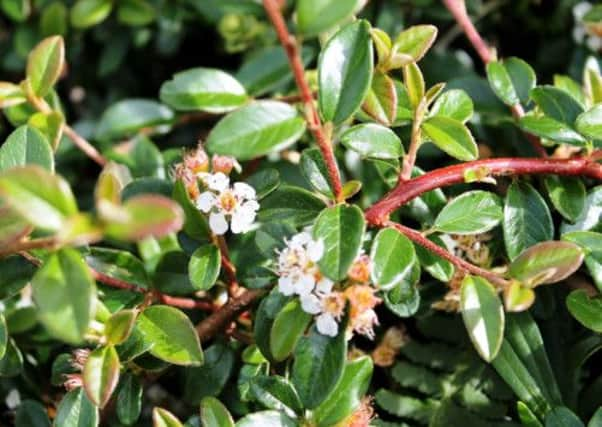Buzz ticket


It’s not actually free food, of course, because the plant has an ulterior motive – it wants all those happy insects to pollinate its flowers. To humans, those blooms are insignificant. In fact, a lot of people wouldn’t thanks you for the gift of a cotoneaster; they want bigger, bolder flowers, magnificent foliage; what you get with a cotoneaster is tiny leaves, tiny flowers and, thanks to all those noisy insects, tiny berries in autumn.
You also get an incredibly hardy plant, often with the ability to grow horizontally or vertically, which can be pruned to order and which, before it goes to sleep for winter, goes out in a blaze of autumnal colour.
Advertisement
Hide AdAdvertisement
Hide AdSo, if you want a shrub which can be persuaded to grow where and how you want it to grow, and a shrub which attracts not only hordes of insects but which also provides valuable nourishment for birds – particularly blackbirds – then you could do worse than grow a cotoneaster.
This is an adaptable family of plants, so there should be a space – large or small – where one would fit in comfortably. They come in a variety of shapes and sizes. Some begin to flower in May; others wait until June before producing tiny white blossoms.
Some cotoneasters are happy to remain small all their lives; others will rapidly climb upwards to clothe a wall or fence, and such is the strength or their branches that they rarely if ever require tying in place. And it’s even possible to grow a cotoneaster as a small tree.
If that’s not enough to persuade you to grow one, then consider that all are hardy and will tolerate even the meanest of soils. Once planted, they can be left to get on with growing, and the evergreen varieties will produce year-round interest.
Advertisement
Hide AdAdvertisement
Hide AdSo, if you want a spreading shrub which grows just a few inches high, or a shrub with long, arching branches, think cotoneaster. Just remember to buy some ear-plugs for when the bees make merry in the height of summer.